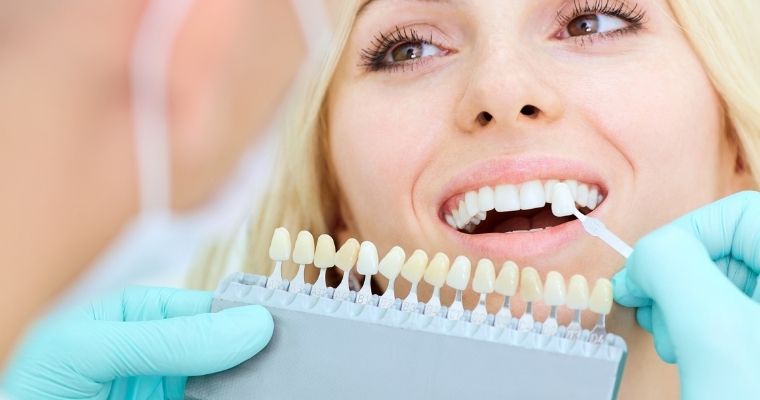A brighter smile can boost confidence and make a strong first impression, so it’s no surprise that teeth whitening is one of the most requested cosmetic dental treatments. Prices can vary widely, and the options range from drugstore strips to in-office treatments. Understanding the cost factors can help you choose the best approach for your needs and budget.
What Affects the Cost of Teeth Whitening?
A few key factors influence the price you might pay for teeth whitening:
1. Method Chosen
In-office whitening treatments tend to cost more than take-home kits, while over-the-counter options are usually the least expensive.
2. Strength of Whitening Agent
Professional products use higher concentrations of peroxide, which can lead to faster, more noticeable results.
3. Number of Sessions Required
Depending on the degree of staining, multiple treatments may be necessary to achieve your desired shade.
4. Additional Services
Cleanings, fluoride treatments, or sensitivity-reducing products may be recommended before or after whitening and can affect the total cost.
5. Location and Clinic Pricing
Fees can vary depending on where you live and the pricing structure of the dental office you visit.
Comparing Whitening Options
| Whitening Option | Typical Cost | Treatment Time | Duration of Results |
| Over-the-counter products | $20–$100 | Daily for 1–2 weeks | A few months |
| Take-home trays from a dentist | $150–$400 | 30–60 minutes daily for 1–2 weeks | Up to 1–2 years with maintenance |
| In-office professional whitening | $450–$800 per visit | Usually 60–90 minutes | 1–3 years with proper care |
Over-the-Counter Whitening
These include whitening strips, pens, and LED light kits available at most pharmacies. They’re easy to use and inexpensive, but the results are usually more subtle and temporary. Because the whitening agents are weaker, they require more time and may be less effective on deeper stains.
Dentist-Supervised Take-Home Trays
Take-home kits provided by a dentist are more customized. The trays are molded to fit your teeth, helping the whitening gel stay in place and reducing gum irritation. These kits cost more upfront but offer better results and can be reused with refill syringes, making them a good long-term option.
In-Office Professional Whitening
This method is the most effective and fastest. Dentists use highly concentrated whitening agents and may apply a special light or heat source to accelerate the process. Patients can often see a noticeable difference in just one session, though the cost reflects the level of supervision and strength of materials used.
Other Costs to Keep in Mind
- Pre-whitening Cleaning: If plaque or tartar is present, a cleaning may be required before whitening can begin, typically costing $75–$150 if not already covered.
- Sensitivity Treatments: Some people need desensitizing gels before or after treatment, which may add $20–$40.
- Touch-Up Supplies: Refill whitening gel for trays can cost $20–$40, while additional strips or pens are also available for maintenance.
Does Insurance Cover Whitening?
Most dental insurance plans do not cover teeth whitening since it’s considered cosmetic. However, you may be able to use a health spending account (HSA) or flexible spending account (FSA) to offset the cost if applicable. It’s a good idea to check with your provider to confirm eligibility.
Choosing the Best Whitening Option
Think About Sensitivity
If your teeth are prone to sensitivity, you may want to avoid strong in-office treatments and instead use a lower-strength gel at home.
Consider Your Timeline
In-office whitening delivers fast results, making it a great option if you’re preparing for a special event. If you have more time and want a gradual change, take-home trays can be equally effective.
Look at the Total Value
Over-the-counter products may seem cheaper, but they often require frequent reapplication. Custom trays or professional whitening may cost more but deliver longer-lasting results.
Consult a Dental Professional
Some stains, such as those caused by medication or trauma, may not respond well to peroxide-based whitening. A dentist can help determine whether whitening will be effective or if other treatments might be better suited.
Making Results Last Longer
To extend the benefits of teeth whitening, follow these tips:
- Avoid staining foods and drinks like coffee, red wine, berries, and tea
- Rinse with water after consuming dark beverages
- Use a whitening toothpaste once or twice per week
- Maintain regular dental cleanings and checkups
- Avoid smoking or tobacco products
Learn More About Whitening Options
If you’re considering professional teeth whitening, a dentist breaks down what’s involved, what to expect, and what it typically costs based on your specific needs.
Teeth whitening doesn’t have to be confusing or costly if you know your options. Whether you go with an over-the-counter product or a professionally guided treatment, understanding the typical costs and benefits can help you make an informed decision and get the smile you’re hoping for.




